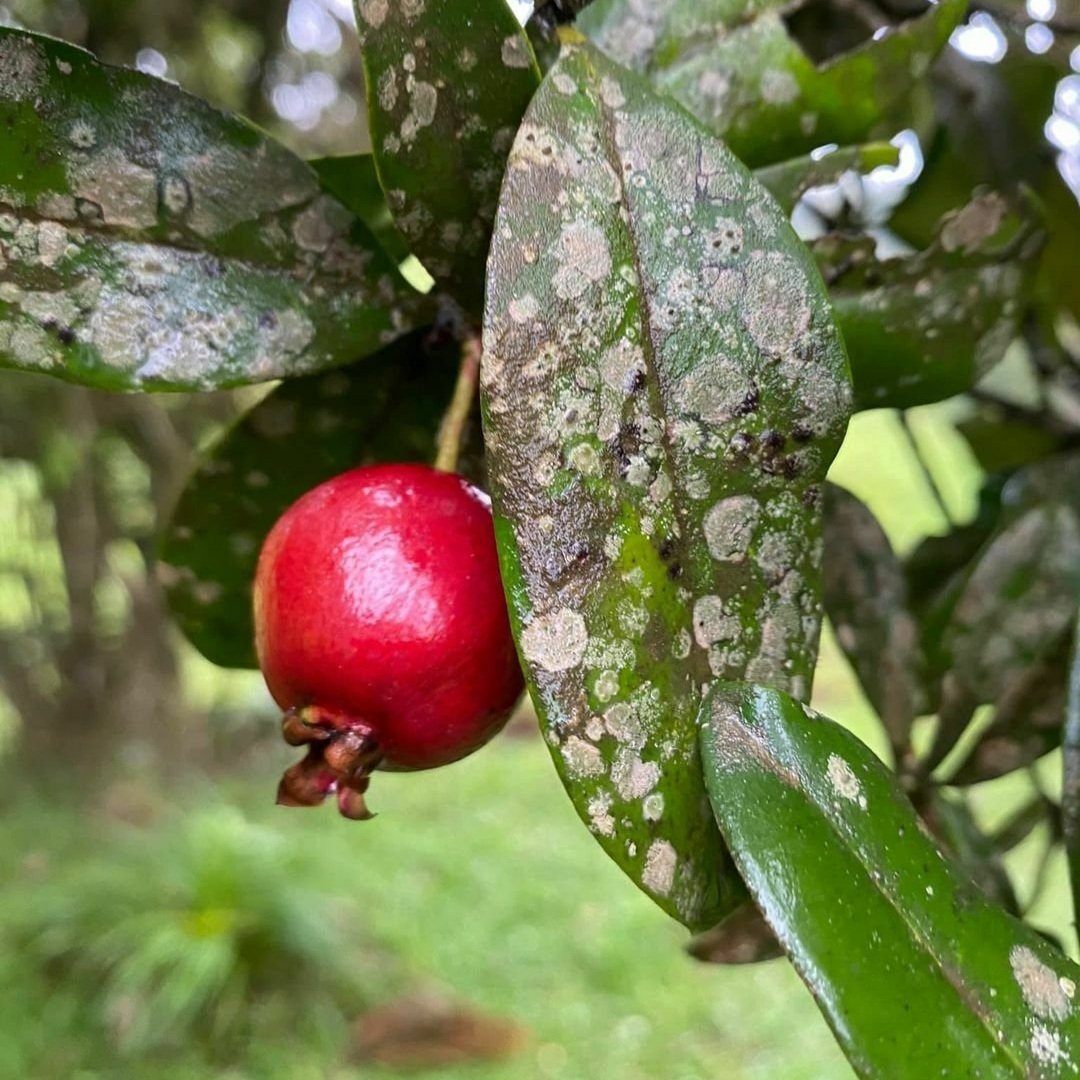Eugenia sp Murta de Santa Catarina
Seeds were imported from Brazil. It has the same size, skin thickness, and seed-to-flesh ratio as a Grumichama, but the flavor is slightly different, which those who have had it found enjoyable. There's no astringency or bitterness, and it's not sour at all. It's about as sweet as a Grumichama. This species was found in Santa Catarina, Brazil, which has a diverse climate due to its varied topography, ranging from subtropical to temperate conditions. Coastal areas experience a humid subtropical climate with warm temperatures averaging 68–82°F (20–28°C) year-round, and rainfall is evenly distributed throughout the year, with a wetter season from November to March. Santa Catarina, Brazil, spans USDA Hardiness Zones 9-11, with coastal areas in Zones 10-11 and cooler inland regions in Zone 9. Seeds are shipped in humid vermiculite.
Seeds were imported from Brazil. It has the same size, skin thickness, and seed-to-flesh ratio as a Grumichama, but the flavor is slightly different, which those who have had it found enjoyable. There's no astringency or bitterness, and it's not sour at all. It's about as sweet as a Grumichama. This species was found in Santa Catarina, Brazil, which has a diverse climate due to its varied topography, ranging from subtropical to temperate conditions. Coastal areas experience a humid subtropical climate with warm temperatures averaging 68–82°F (20–28°C) year-round, and rainfall is evenly distributed throughout the year, with a wetter season from November to March. Santa Catarina, Brazil, spans USDA Hardiness Zones 9-11, with coastal areas in Zones 10-11 and cooler inland regions in Zone 9. Seeds are shipped in humid vermiculite.
Seeds were imported from Brazil. It has the same size, skin thickness, and seed-to-flesh ratio as a Grumichama, but the flavor is slightly different, which those who have had it found enjoyable. There's no astringency or bitterness, and it's not sour at all. It's about as sweet as a Grumichama. This species was found in Santa Catarina, Brazil, which has a diverse climate due to its varied topography, ranging from subtropical to temperate conditions. Coastal areas experience a humid subtropical climate with warm temperatures averaging 68–82°F (20–28°C) year-round, and rainfall is evenly distributed throughout the year, with a wetter season from November to March. Santa Catarina, Brazil, spans USDA Hardiness Zones 9-11, with coastal areas in Zones 10-11 and cooler inland regions in Zone 9. Seeds are shipped in humid vermiculite.




